Picos de Europa National Park Ultimate Guide in 2024 & Road Trip Itinerary
There’s a chance you may have never even heard of the incredible Picos de Europa National Park in Spain. Perfectly nestled in the middle of the scenic north coast of Spain, these rugged and diverse mountains are less than 15 miles from the Bay of Biscay.
The tallest mountain peak in the Picos de Europa is Torre de Cerredo which sits at just about 8,700 feet, but numerous limestone peaks make up the Picos de Europa National Park. The three mountain ranges of the Picos include the Western (Occidental), Central (Central), and Eastern (Oriental).
The Picos de Europa National Park (Parque Nacional de los Picos de Europa) is also unique as it includes three autonomous regions in Spain: Cantabria, Asturias, and León (Castille & León). This National Park in Spain stretches over 250 square miles.
While popular, the Picos de Europa National Park still feels like a “hidden gem” and remains a favorite of hikers, rock climbers, and those looking to get a little off the beaten path in Spain.
It’s not just hikers who can enjoy the beauty of the Picos de Europa. Find charming villages, views of jagged mountain peaks, speedy cable cars, lovely alpine lakes, and a unique culinary scene.
This under-appreciated National Park in Spain actually doesn’t feel very “Spanish” at all.
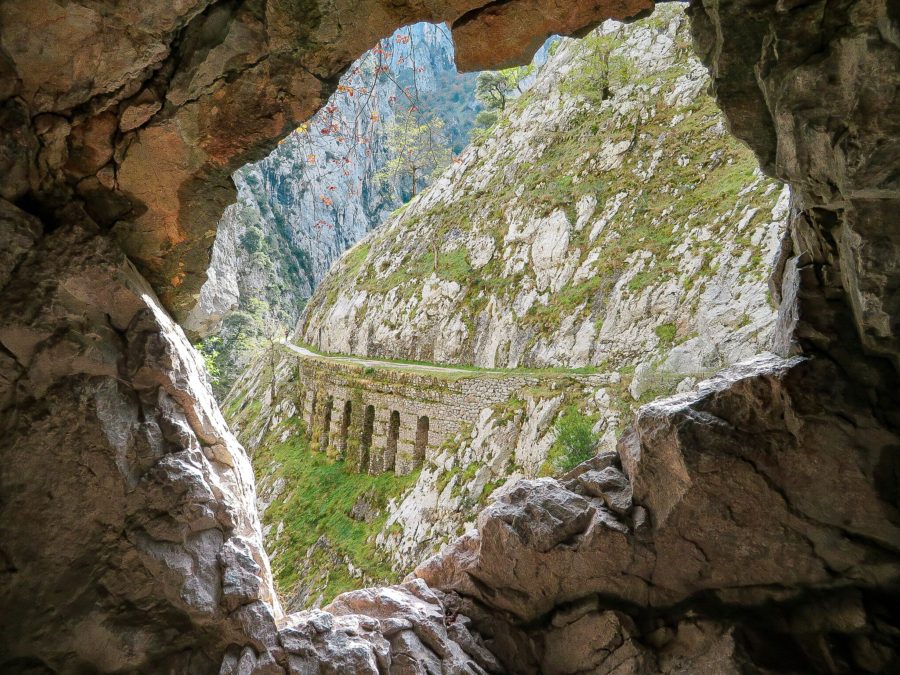
With the Picos de Europa National Park being spread across three different regions, it can be hard to plan a visit. Each region has a wealth of information about its section of the national park, but the tourist information centers can lack details on the neighboring regions of the park.
This Picos de Europa itinerary includes how to get a taste of all three unique communities!
Follow along with this diverse Picos de Europa guide and road trip itinerary with the best places to visit in Los Picos de Europa Spain.
Table of Contents
- How to Get to Picos de Europa National Park
- Best Time to Visit Picos de Europa National Spain
- Picos de Europa Itinerary Day by Day
- What to Do After Visiting Picos de Europa National Park
- A Taste of Picos de Europa National Park
How to Get to Picos de Europa National Park
One of the easiest access points to reach the Picos de Europa Spain is the bustling port town of Santander. This city is the capital of the Cantabria region and has an airport (Santander Airport SDR). Santander has a well-connected bus terminal and train station. Many of the car rental agencies are found next to the Estación de tren Santander.
Bonus, the Picos de Europa gateway mountain village of Potes, is only a scenic hour and a half drive away. Santander has a ton of charming tapas restaurants and is a great place to start any Picos de Europa itinerary.
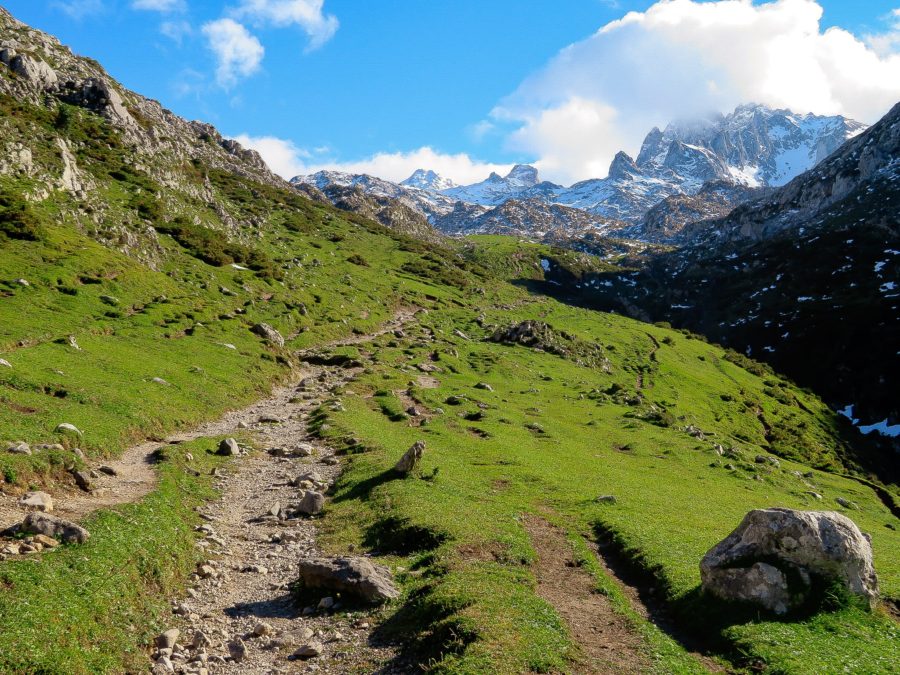
If visiting the Basque region in Spain, Bilbao has an international airport (BIO). Bilbao is well-connected to the gem city of San Sebastian, which is located directly on the Bay of Biscay and is undoubtedly a food destination in Spain.
Another popular way to get to the Picos de Europa National Park is from Oviedo of the Asturias region. Oviedo is a bustling city with an important Cathedral and hilltop Pre-Romanesque Churches.
If departing from Oviedo, it’s best to reverse this Picos de Europa itinerary and head first to the village of Cangas de Onís, only an hour and a half from the Principality City of Asturias. Buses run by Alsa also connect Oviedo to Cangas de Onis.
Due to the diversity and sheer size of the park, the best way to utilize your time in the Picos de Europa is to rent a car. However, I’ve visited the Picos de Europa once using a car and another time by using public transportation and taxis.
☛ Psst... Public transportation is sporadic and usually runs to limited destinations. These services are usually only available from June to mid-October
Alternative Ways to Get to Picos de Europa Spain
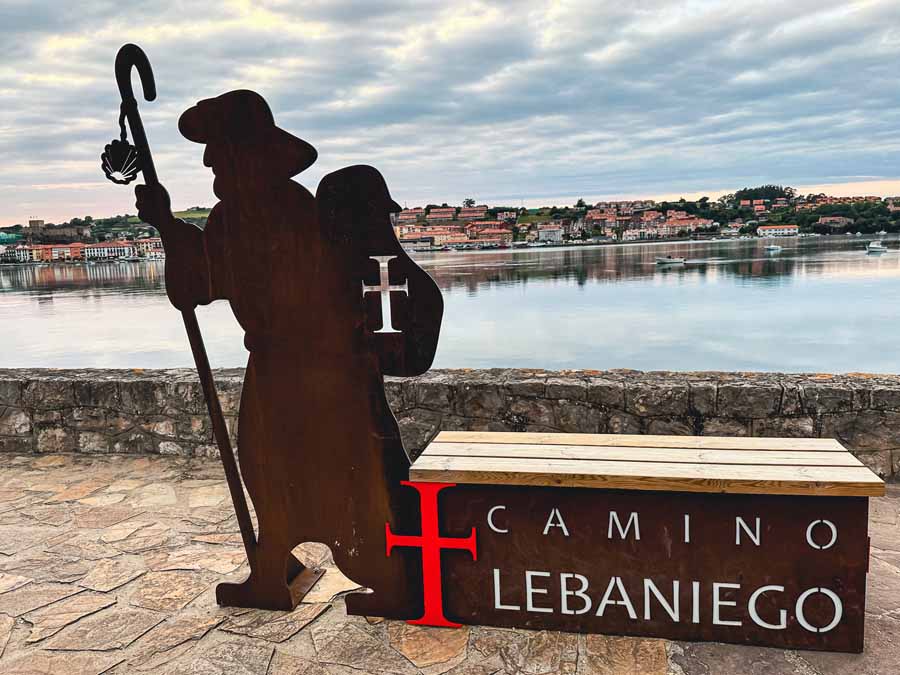
Spain is famous for its many Camino de Santiago pilgrimage routes. Camino routes span all across Europe and end at the impressive Cathedral de Santiago de Compostela.
There is a pilgrimage route that starts on the Camino de Santiago Norte Way from the charming village of San Vicente de la Barquera. The way leaves the coast and twists through the mountains and small villages to arrive at the Monastery Santo Toribio de Liebana just after the medieval village of Potes.
🥾 Camino Lebaniego | San Vicente de la Barquera – Monastery Santo Toribio de Liebana (near Potes) | Distance: 44.7 Miles (71.9 KM) | Duration: 3 – 5 Days | Difficulty: Challenging with mountainous terrain
The pilgrimage site of the Monastery of Santo Toribio de Liebana is significant because it is said to hold the sacred relic of the original wood True Cross (Lignum Crucis). Pilgrims have been walking the way of Lebaniego for over 500 years to gaze upon the remains of a section of the wooden cross.
This alternative way to reach the Picos de Europa is challenging and best suited for experienced hikers. Like all Camino de Santiago pilgrimages, it’s important to pack light and follow the arrows.
☛ Psst… Feeling inspired by all those pilgrims walking the Camino de Santiago? Here are some of my top Camino de Santiago Tips for First Time Pilgrims
Best Time to Visit Picos de Europa National Park
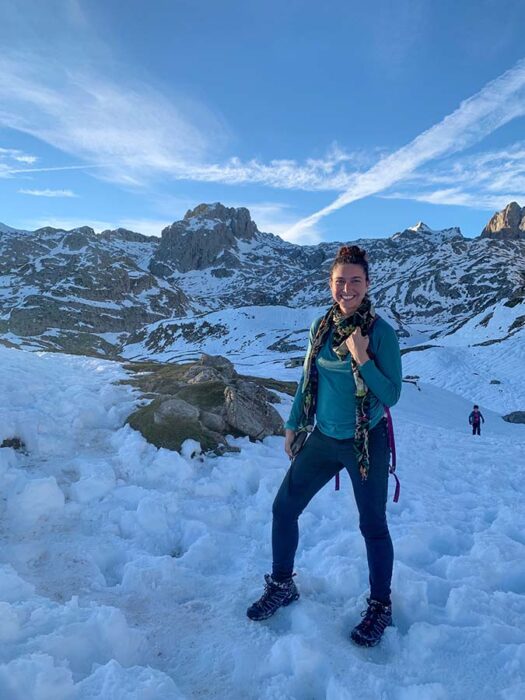
Many areas of the Picos de Europa National Park are open year-round. With its close proximity to the ocean, the park’s weather can be surprisingly temperate. However, some areas of the park are hard to access and can close due to weather conditions.
The peak season or high season in the Picos de Europa is from July – September. During this time, almost all of the trails are open and the crowds a plentiful. This national park is extremely popular with Spanish domestic tourism during the summer months. Many Spanish locals head to northern Spain and the mountains to escape the blazing summer heat.
July and August can be unbearable with crowds and accommodation can be harder to find (and more expensive).
In contrast, during the off-season, some of the trails may be hard to access and you encounter some road closures. It does snow in the high mountains of the Picos de Europa, so some mountain refugees can close.
During the shoulder months of May, June, October, and even early November are perfect times to visit the Picos de Europa National Park.
Believe it or not, I took this Picos de Europa road trip in the first week of November. In some areas I encountered snow, but nothing too drastic to deter a visit. Many of the mornings started out with overcast skies, but I was usually fortunate enough to enjoy sunny afternoons.
➯ Always check the weather conditions and stay up to date with current data by visiting the official website of the Parque Nacional Picos de Europa
Picos de Europa Road Trip Itinerary Day by Day
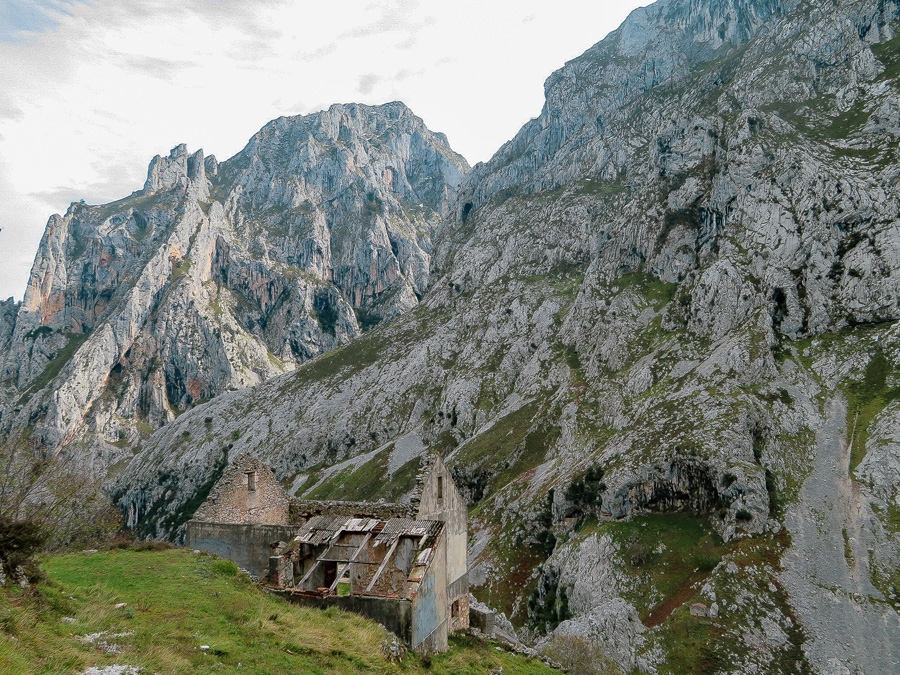
This four-day guide to the Picos de Europa starts from Santander and visits all three autonomous communities of the national park. This is only a brief overview of a 4-day Picos de Europa National Park road trip.
I’ve also included some bonus trips if you wish to spend longer than 4 days in the Picos de Europa National Park. I’ve visited the Picos de Europa a few times to complete numerous hikes and explore more in-depth.
- Depart Santander | Visit Potes | Take the Cable Car at Fuente Dé
- Visit Beautiful View Points | Day Hike at Ruta del Cares
- Lagos de Covadonga | Explore Around the Lakes | Sleep in Cangas de Onís
- Depart Cangas de Onís & Return car to Santander
Picos de Europa Road Trip Day 1 | Santander to Potes & Fuente Dé
Let’s begin this epic “taste of the Picos de Europa road trip.” Remember, this itinerary can be reversed for those departing from Oviedo.
It’s best to pick up a rental car as early as possible. From Santander, it’s under a 2-hour drive to Potes. I picked up my car by 11:00, but I wish I had picked it up as early as possible

There were few cars to choose from with my last-minute road trip, but a mini-cooper whipped through the mountains better than I thought. However, I did encounter snowy roads in one area, that were a little problematic for this car.
☛There are multiple car rental agencies located right at the main train station in Santander Cantabria | Average Daily Cost: $30- $40 USD | Those who can drive a manual car will find cheaper rates!
Leave the train station and exit Santander. The road is quite easy to follow and passes through small villages and windy mountain roads. Be mindful as there were some rock fragments I had to dodge as I began my ascent up to the village of Potes.
Santander Train Station to Potes: Around 70 miles | Under 2 hours
Potes
Arrive at Potes, a fantastic medieval village in the Cantabria region of the park. Explore the twisting cobblestone streets and lovely village.
Located in a stunning valley, wander across beautiful bridges that straddle and connect this picturesque village. Either spend the afternoon soaking in activities in the city or drop off your luggage and head to Fuente Dé.
Potes to Fuente Dé: 15 miles | 25 minutes
Teleférico de Fuente Dé


Visit the picturesque village of Fuente Dé. The main attraction here is to take the almost 2,500-foot climb to the top of the mountain. Most travelers visit Fuente Dé to ride up the cable car or to hike.
The cable car allows visitors to savor the impressive Central Massif views and the top of the cable car is at an elevation of 6,079 feet (1,853 m). The Fuente Dé cable car zips to the top of this mountain in under 4 minutes!
There is a large parking lot at the foot of the Teleférico de Fuente Dé (cable car) along with two hotels: the luxurious Parador de Fuente Dé and Hotel Rebeco.
Find a restaurant at the top of the cable car for those looking to simply savor those incredible views of jagged peaks. Keep your eyes peeled for Chamois, which is a goat-like almost antelope.
From here, it’s possible to explore a few hiking trails. The official cable car website offers a few hiking routes that are reachable from the drop-off of the cable car. The two most popular hiking routes from Fuente Dé are the challenging high mountain Horcados Rojos trail and the popular Ruta Puertos de Aliva.
One of the most popular ways to visit Fuente Dé is to ride up the cable car and then hike down via the PR-PNPE 24 Puertos de Áliva trail. This trail is long but fairly easy as it descends down the mountainside. Appreciate the high mountain views, meadows, and as the trail makes its final descent, forests filled with oak and beach trees.
End in the village of Espinama or loop back to the parking lot.
🥾 Puertos de Áliva Trail from Top of Fuente Cable Car | PR-PNPE 24 |Distance: 9 miles (14.5 KM) to the parking lot | Duration: +/- 4.5 hours | Official Path Information
If hiking down from the Teleférico de Fuente Dé, make sure to have plenty of time and carry enough water.
Fuente Dé Cable Car | Teleférico de Fuente Dé

The cable car is one of the most popular places to visit in the Picos de Europa National Park, so it’s best to pre-book tickets. During the high season, pre-booking tickets is essential. Online tickets must be purchased at a minimum of 24 hours in advance.
High Season: End of June – Mid-September / Daily: 8:00 – 18:30 | Last Departure runs 15 minutes before closing | High Season Adult Ticket: Round-Trip €24 / One-Way: €13 | Buy Ticket Online Here
The Cable car in Fuente Dé is typically closed on December 24, 25, & 31, January 1 and 6.
Sleeping in Potes & Night Activities
I opted to sleep in Potes as the village has a bustling tapas and nightlife scene compared to the nearby remote mountain communities. Although the population is under 1,500 people, the medieval streets become filled with eager visitors out enjoying the nightly tapas scene.
Don’t forget that the Spanish culture eats late, and many restaurants won’t start serving dinner until around 21:00.
You may start to notice multiple signs for “Sidra” bars. These cider bars are a trademark of the Asturias region, but nearby villages have started offering these popular watering holes.
A great place to sleep in Potes with close proximity to the heart of Old Town is the Hostería Picos de Europa. Find friendly owners, comfortable, yet modern rooms, and on-site parking (a huge bonus), all within walking distance of the charming streets of Potes.
Additionally, there are the top-rated Hosteria Sierra del Oso and the popular Casa Cayo.
➜ Browse more places to sleep in Potes Spain
Picos de Europa Road Trip Day 2 | Epic Viewpoints to Ruta del Cares
On Day 2 of this Picos de Europa itinerary, try to get an early morning start. There are a few epic viewpoints en route to the incredible day hike of Ruta del Cares.
The Ruta del Cares will take at least 6 -8 hours round-trip, so waking up with the sunrise is important!
Mirador del Corzo / San Glorio (Deer Statue)
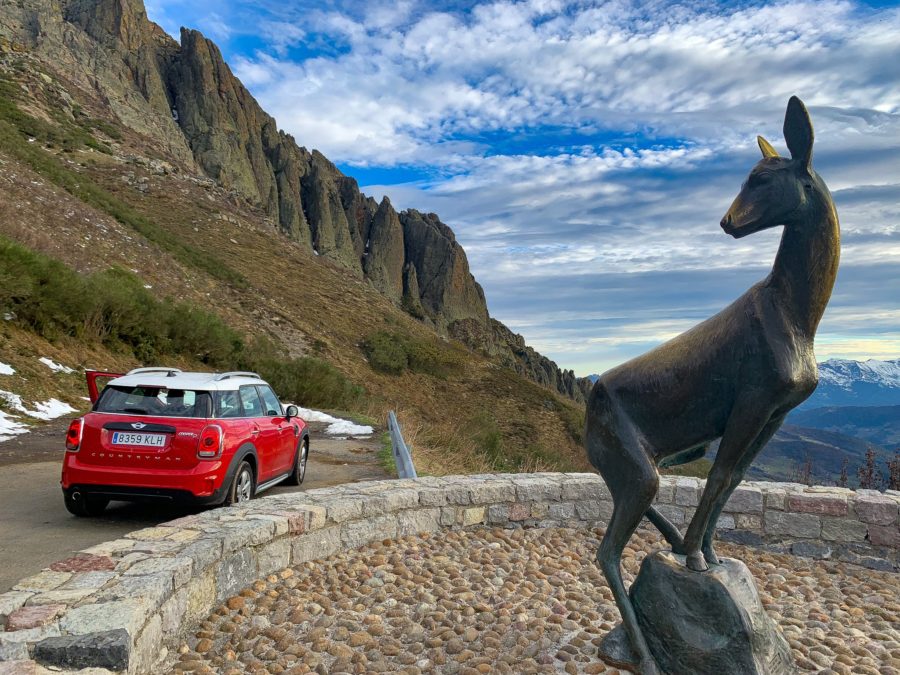
This nice little viewpoint is a great place to get out and stretch your legs. This is where the autonomous communities of León and Cantabria meet. Take a few photos and head just a few miles further down to Oso Pardo, which offers even more sweeping views.
Potes to Mirador del Corzo: 15 miles | half an hour
Monument to Oso Pardo / Collado de Llesba (Bear Statue)
The views of the mountains from Oso Parado are absolutely stunning. The friendly man who owns the Hostería Picos de Europa told me this was his favorite viewpoint in all of Cantabria and I had to agree.
There are a few hiking trails nearby, but due to time restraints, I only enjoyed the epic views before heading toward Caín de Valdeón.

On foggy days it’s best to skip these two viewpoints, as there will be nearly zero visibility.
Mirador del Corzo to Monument to Oso Parado: 3.5 miles | under 10 minutes
Next, take the twisting and turning roads to the small hamlet of Caín de Valdeón. The village of Caín de Valdeón is one of the starting points for the most popular hike in the Picos de Europa National Park, the Ruta del Cares.
Monument to Oso Parado to Caín de Valdeón: 25 miles | 1 hour
Day Hike at the Ruta del Cares | (PR-PNPE 3)
The Ruta del Cares, or the Cores Gorge, may be the most popular and famous day hike in the Picos de Europa National Park. This trail is an out-and-back route that follows the Rio Cares along a stunning gorge, engulfed by rugged limestone mountains.
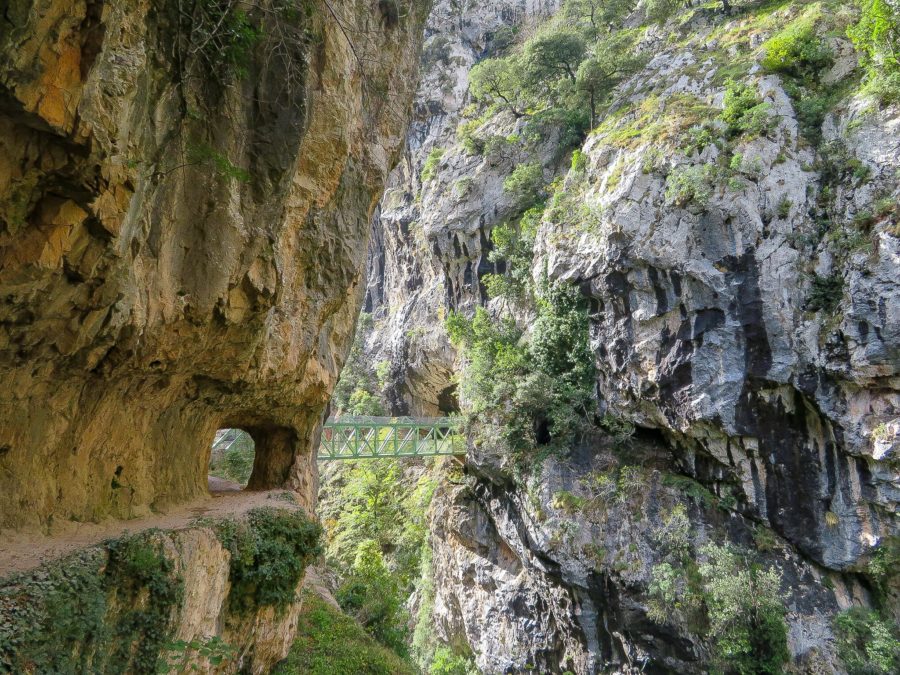
The Cares Gorge hike is 12 km each way (around 7.5 miles). This epic gorge hike includes paths that cut through small caves and cross bridges. The Ruta del Cares trail runs between the two villages of Caín de Valdeón (León) and Poncebos (Asturias).
The Ruta del Cares trail is extremely well-marked but can offer up its own set of challenges. Many sections of the path have no guard rail and it can be mind-boggling to look down at the depths of the canyon. There are sections of the gorge that reach depths of nearly 2,000 meters (6,562 ft).
The trail is flat, but there are a few parts of the trail that have steeper inclines. Overall, I would say this trail is fairly easy, but allow 3.5 hours to reach Poncebos and another 3.5 to return. It is also possible to call a taxi to return you to your car, but I don’t necessarily recommend that.
There are a few parts of the trail that go through caves and tunnels that have been built into the mountainside, so it’s best to carry a headlamp just in case.
The Ruta del Cares is by far the most popular and trekked trail in the Picos de Europa National Park.
Where to Start the Cares Gorge Hike?
There are two places to start the Ruta del Cares day hike: Caín de Valdeón (León) or Poncebos (Asturias). I’ve visited both Cares Gorge trailheads and here’s my humble opinion.
Why Start the Ruta del Cares from Caín?
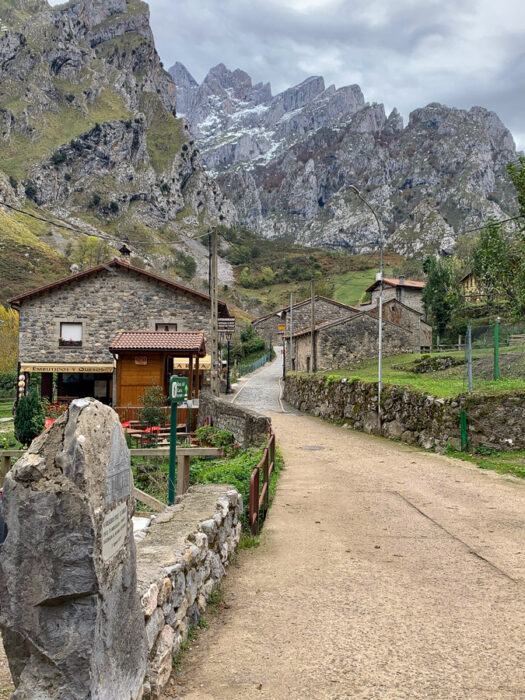
Personally, I liked starting the Ruta del Cares trail from Caín de Valdeón. Driving from Potes, you will be blessed with two great viewpoints of the Picos de Europa mountains. The windy road deters some drivers, but the road is beautiful and sees little traffic. Also, with a car, it’s possible to park right next to the trailhead for free.
With fewer people starting the Cares Gorge from Caín de Valdeón, it’s easier to snag a great parking spot.
Finally, the most scenic and adventurous part of the Cares Gorge trail is closer to Caín. So, if you can’t make it all the way to Poncebos Asturias, you get to experience the best part of the trail!
Utilize the parking lot in front of Hostal La Ruta and enjoy a beverage upon return
Why Start the Ruta del Cares from Poncebos?
If hiking in the Picos de Europa National Park is your main focus, then I would start the Ruta del Cares from Poncebos Asturias.
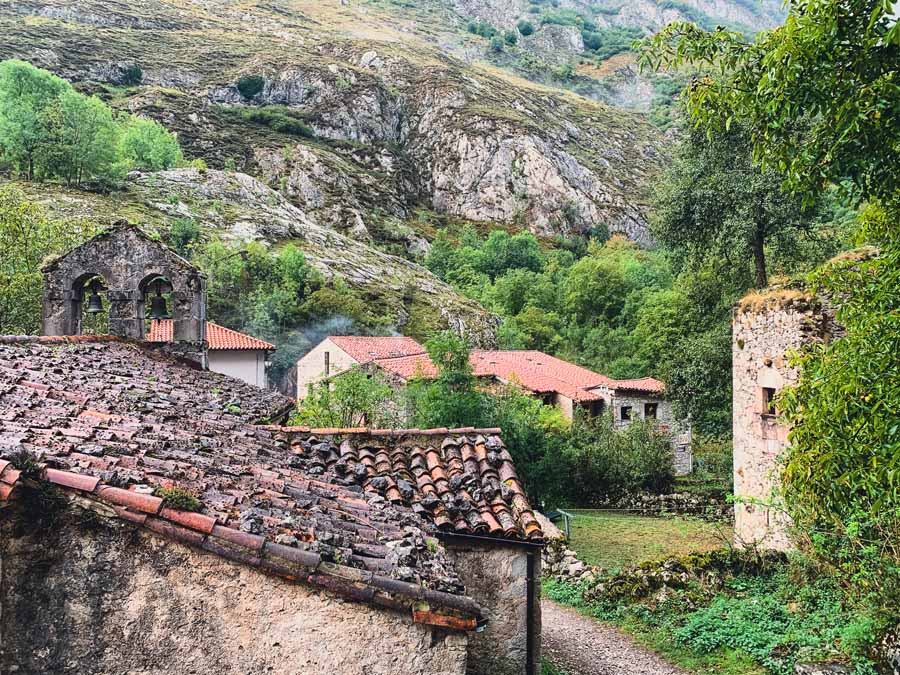
There are tons of hikes from Poncebos, so you’ll have to add an extra day or two to your Picos de Europa itinerary if looking to spend most of your time hiking in the Picos de Europa.
Poncebos sits near many trailheads, including the Canal del Texu trail to reach Bulnes, one of Spain’s most isolated villages. If you don’t want to hike, it’s possible to visit Bulnes by riding the Bulnes funicular.
By the way, if interested in visiting the best Asturias villages in the Picos de Europa, it’s possible to hike or visit them in a day. This hike includes Sotres, the highest inhabited village in the Picos de Europa mountains.
It is more common for people to start the Cares Gorge hike from the village of Poncebos, which is the other end of the trailhead. This access point is also easy to reach from the mountain villages of Las Arenas de Cabrales.
Another great and totally different gorge hike than the Ruta del Cares is the Ruta Rio Casaño. This scenic route is just down the road from Las Arenas de Cabrales and is another one of my favorite hikes in the Picos de Europa.
Be mindful that Poncebos is in the opposite direction of Cain, so it’s a little bit of a backtrack to get there. However, it’s really easy to reach Poncebos from Cangas de Onis.
Sleeping Options for Ruta del Cares Hike
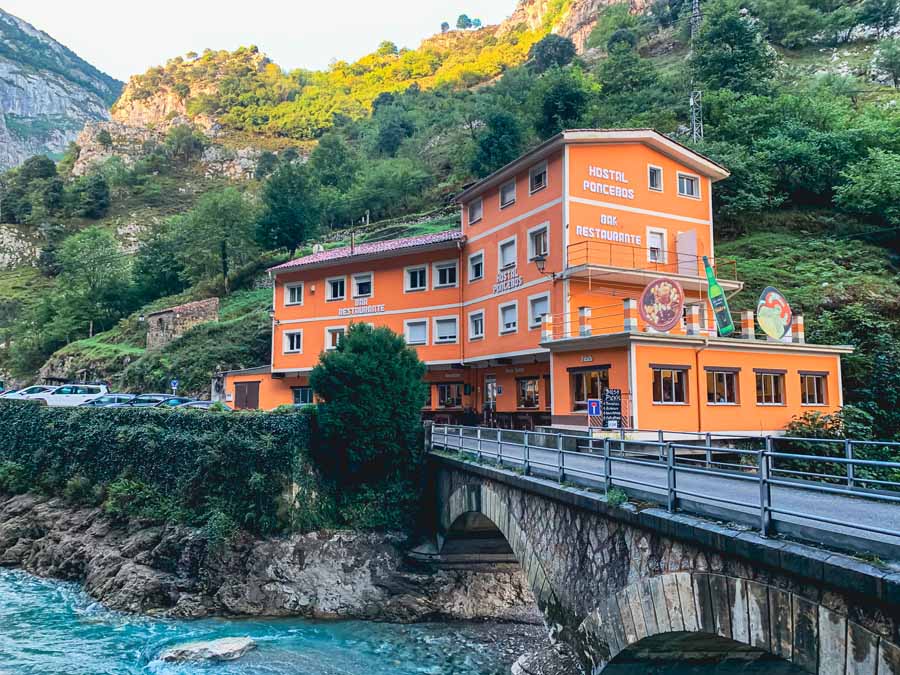
Depending on how you wish to hike the Ruta del Cares Gorge, there are a few different sleeping options.
- Take the 7.5-mile hike to Poncebos and spend the night. Poncebos has a few accommodation options. I love sleeping at Hostal Poncebos. Alternatively, it’s possible to sleep in Las Arenas de Cabrales, which is just down the road and well-connected with Poncebos via bus or taxi. Las Arenas de Cabrales is more of a village with plenty of restaurants, cafes, shops, and a tourist information center.
- Do the round-trip (out and back) version of the Ruta del Cares trail sleep in the adorable village of Caín de Valdeón. La Casona de Palmira is a popular hotel. Budget travelers may wish to sleep at the Hostal La Ruta.
- If looking to get closer to the next destination of Cangas de Onís, spend the night in the sleepy village of Oseja de Sajambre at Hostal La Cuna del Sella
➜ Browse all the Best Places to Stay in the Picos de Europa Spain
Picos de Europa National Park Day 3 | Epic Drive to Cangas de Onís & Lagos de Covadonga

In the morning, if leaving from Caín de Valdeón, this will be one of the longest stretches in the car. However, the views around Oseja de Sajambre are absolutely stunning, so it makes it that much better.
Reach Cangas de Onís and drop off your stuff, or head straight to the beautiful Lagos de Covadonga. The Covadonga Lakes are one of the most popular places to visit in the Picos de Europa National Park in the Asturias region.
Caín de Valdeón to Cangas de Onís: 43 miles | 1 hour and 45 minutes
Lagos de Covadonga (Covadonga Lakes)

Lagos de Covadonga comprises two lovely alpine lakes: Enol Lake (Lago Enol) and Ercina Lake (Lago Ercina). Near the Lakes of Covadonga find a restaurant, and during the high season, a helpful tourist information center.
As a conservation measure, the road from the Covadonga Sanctuary to the Lakes of Covadonga is closed to unauthorized travelers (including tourists). This measure is usually only in effect during the high season until the end of September. Check the up-to-date road conditions here.
If visiting during the high season, there are buses run by Alsa from Cangas de Onís to Lagos de Covadonga. Additionally, there are taxi services, too.
If visiting the Picos de Europa National Park during the “off-season” the road from Cangas de Onís to the lakes is an adventure in itself. The winding road up to the parking twists and turns and offers incredible views. The main parking lot for the lakes is referred to as the Buferrera.
Cangas de Onís to Lagos de Covadonga: 13 miles | 35 minutes
Upon arrival, there are plenty of things to see and do just around the Covadonga Lakes. Many families are usually picnicking and wandering the nearby trails. An enjoyable trail is a casual stroll along the PR-PNPE 2 Los Lagos (2 hours).
Keep in mind, that it is not possible to swim in the Covadonga Lakes, as they are protected!
Buferrera Mines
Extremely close to the Lagos de Covdonga are the Buferrera Mines. They are temporarily closed, but it’s permitted to walk around the outside of them. They are worth a quick gander.
Chapel of the Good Shepherd

In the opposite direction of the Covadonga Lakes, it’s possible to venture towards a few trails and open pastures. Sitting in the middle of the meadow pasture lies the tiny Chapel of the Good Shepherd. This small monument offers some incredible views of the mountains.
if you continue on the path, it’s also possible to visit the Mirador del Rey. This simple viewpoint has nice views of the mountains, but no views of the lakes.
Buferrera to Mirador de Ordiales | PR-PNPE-5
For those looking for a more challenging, but stunning path, follow the signage to Buferrera Ordiales. Although I didn’t make it all the way to the viewpoint, this hiking trail was one of my favorites in Picos de Europa National Park.


On this path, I was able to walk past free-range horses, spot more Chamois, and did not pass a single soul. Since it was November, I went up as far as I could until I needed proper snow hiking gear. But, it was totally worth it!
You will need a full day to hike to the Mirador de Ordiales and back down. The out-and-back hike is challenging and takes hikers up 5,741 feet (1,750 meters). However, the rewards are some of the best views in the entire Picos de Europa National Park.
At the top viewpoint of Mirador de Ordiles is a tribute to Pedro Pidal, the Marques of Villaviciosa, and the first to climb Naranjo de Bulnes (Pico Urriellu).
🥾 Buferrera to Mirador de Ordiales | PR-PNPE 5 | Round-Trip Distance: 13.67 miles (22 KM) | Duration: +/- 4 hours to reach the viewpoint and +/- 2 hours down | Official Trail Information
Visit the Santuario de Covadonga

After exploring the Lagos de Covadonga, take the curvy road back towards Cangas de Onís. Look for the viewpoint to snap some great photos of the pink Basílica de Santa María la Real de Covadonga.
It is possible to visit the Sanctuary of Covadonga for free. Onsite, find a few points of interest, like the Holy Cave, the signature pink Basilica, and the museum.
Covadonga Sanctuary | Find it here: Lugar Covadonga, 33589 Covadonga Asturias Spain | Free Admission | Hours: 8:00 – 20:00 but avoid visiting during mass | Official Website
Cangas de Onís

Cangas de Onís is a cute little mountain village in the heart of the Asturias region of the Pico de Europa Spain. There are plenty of things to do in Cangas de Onís making it an ideal to sleep.
Visit a Cider Bar
This is the place to make sure to try out the “Sidra,” or cider house/ bar. It’s crazy, but the region of Asturias has over 80 major cider mills and produces 80% of all cider in Spain.
Asturias cider culture is unique to the region and one of the best ways to experience it is at a cider bar. Here, it’s all about the pour! Ciders are typically poured from a tall height to create bubbles. These bubbles allow the true flavor of the cider to shine through. This is why only a few “sips” are poured at a time.
To ensure the flavor of the cider, many cider houses have little machines that replicate the process. Make sure to experience at least one cider house in Asturias.
The cider here tastes different than the Basque cider you’ll find near San Sebastian in the hillside village of Astigarraga.
Old Roman Bridge
Another popular place to visit in Cangas de Onís is the Old Roman Bridge. Walk along the cobblestone path and enjoy the surrounding mountains from the old bridge.
Where to Stay in Cangas de Onís

In the center of it all, Pension Reconquista offers simple rooms with lovely little balconies! Enjoy a morning coffee with the beautiful mountains in the backdrop. The owners are warm and very accommodating. This little hotel is close to the bridge and within a few minutes walk of some of the best cider bars in Cangas de Onís.
Cangas de Onis is a popular place to base when visiting the Picos de Europa National Park. There are tons of different accommodation options for all types of travelers and budgets.
Hotel Santa Cruz is a popular option near the center of the village along with Hotel Los Lagos Nature.
➜ Browse all the Cangas de Onis Accommodation Options
Leave Picos de Europa National Park & What to Do Next
On Day 4, it’s sadly time to leave the incredible Picos de Europa National Park. However, there are a few spots that you could enjoy before returning the car.
As I picked up my car in Santander, I also returned it there.
San Vicente de la Barquera
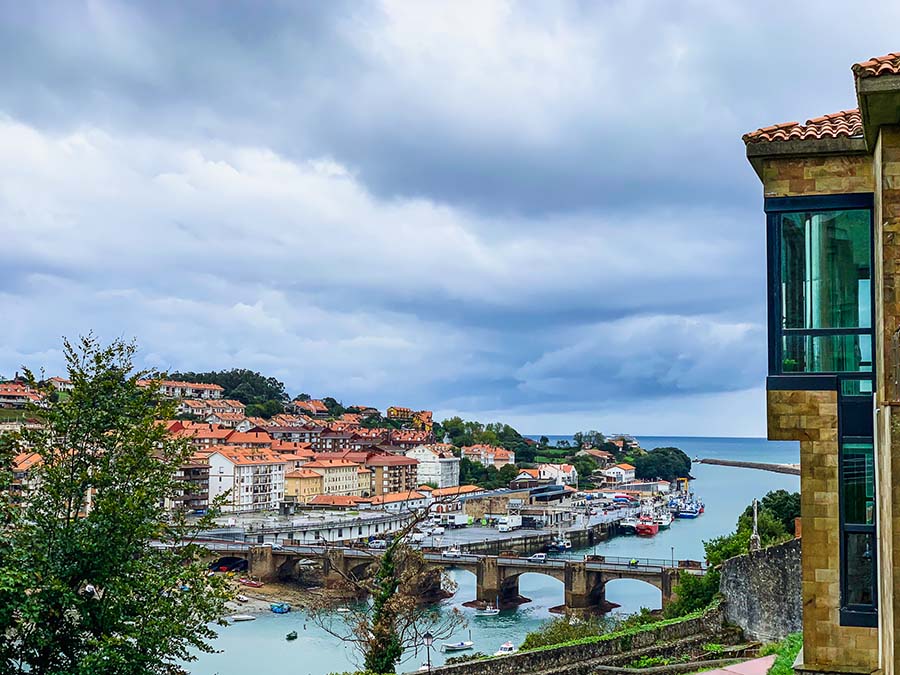
San Vicente de la Barquera is truly a gem found on the coastline in Cantabria. On a clear day, the incredible Picos de Europa mountains sit in the backdrop of this seaside village.
San Vicente de la Barquera is part of the Camino de Santiago pilgrimage route. The medieval town has a 13th-century castle and some of the original gates. Like most towns on the Camino de Santiago, there is an iconic church filled with history.
There are plenty of tapas bars and restaurants serving up the freshest fish and seafood.
Cangas de Onís to San Vicente de la Barquera: 50 miles | 50 minutes
Santillana del Mar
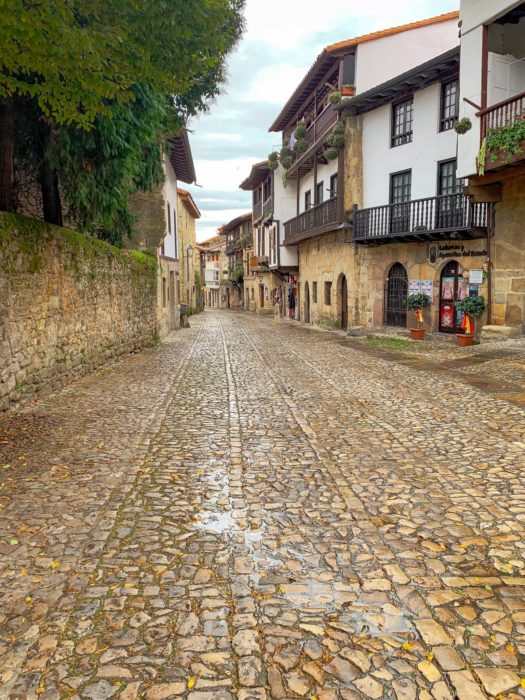
Leave the Picos de Europe National Park and head towards the sea. The road basically follows near the coast until you reach the village of Santillana del Mar. Yes, I know, Santillana del Mar is quite touristy. However, there is still a little charm to find throughout the city.
This city is also known as the “City of Three Lies,” since it does not have a Saint, is not flat (llana), and is not directly on the Sea (Mar).
Cangas de Onís to Santillana del Mar: 70 miles | 1 hour 15 minutes
The village can feel a little “sold out” to tourism, but if you go in with an open mind, the streets are extremely picturesque. Maybe it was because I visited in the off-season, but I really could appreciate the architecture with no crowds.
Due to its touristy nature, maybe try to not eat here, as the food can be really hit or miss.
In my opinion, I preferred San Vicente de la Barquera to Santillana del Mar.
However, Santillana del Mar is only a 30-minute drive in the direction of Santander, so it’s possible to visit both villages before returning the rental car.
Return Car to Santander

Leave the village and return the car back to Santander. If you haven’t yet, now that you have no car, spend the night in Santander and enjoy a night of wine and fresh seafood tapas joints!
Santillana del Mar to Santander: 20 miles | Half an Hour
A Taste of Picos de Europa National Park
In short, this ultimate guide to the Picos de Europa includes a detailed itinerary and is the perfect sampler to get a taste of the Picos de Europa National Park. This Picos de Europa road trip crosses all three autonomous communities that make up the diverse naturally and culturally rich Picos de Europa National Park.
This Picos de Europa itinerary is jam-packed with a wide range of activities from riding a cable car, to day hikes, lovely viewpoints, and experiencing cultural traditions.
Have you been to the Picos de Europa Spain? Did you fall in love with this spectacular region in northern Spain? Is there a place in this Picos de Europa guide that’s not included on the itinerary that you loved? Let me know in the comments below!
Pack This Post for Later! Pin It!
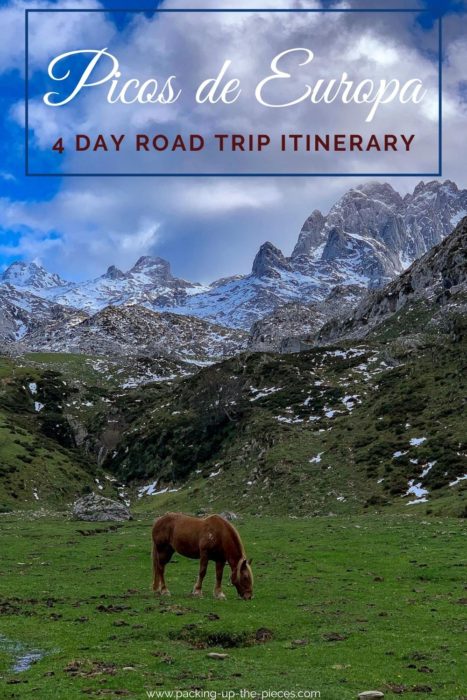



Disclaimer: There’s a chance this post contains affiliate links, and I receive a small (but grateful) portion of the sale. There’s no extra cost to you, and I only promote things that I use and love.
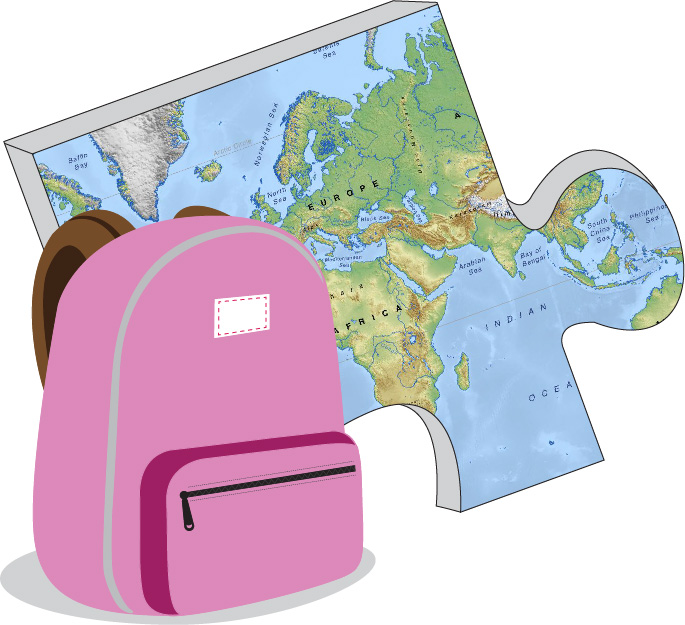
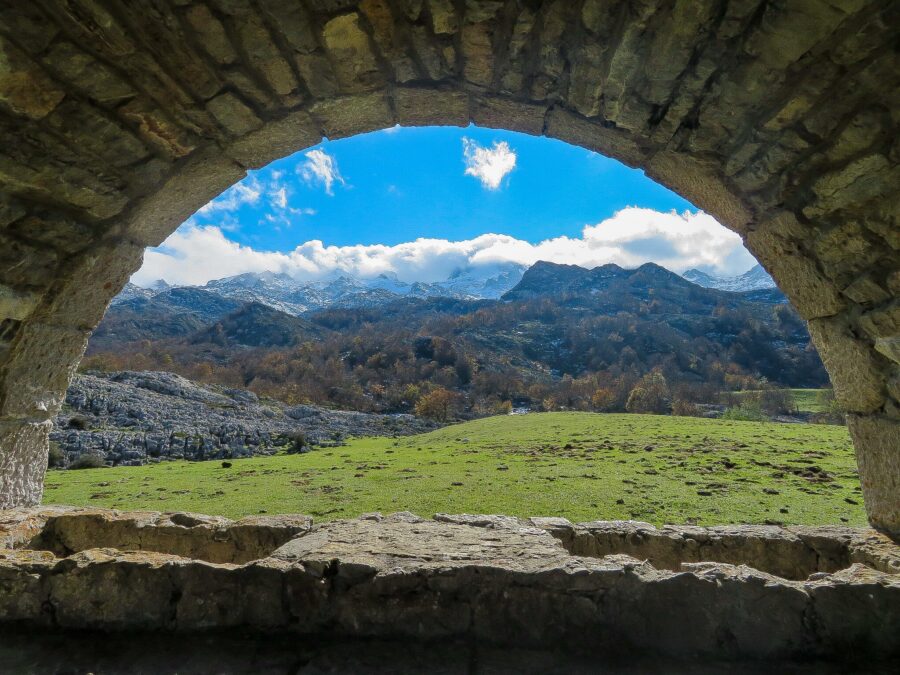




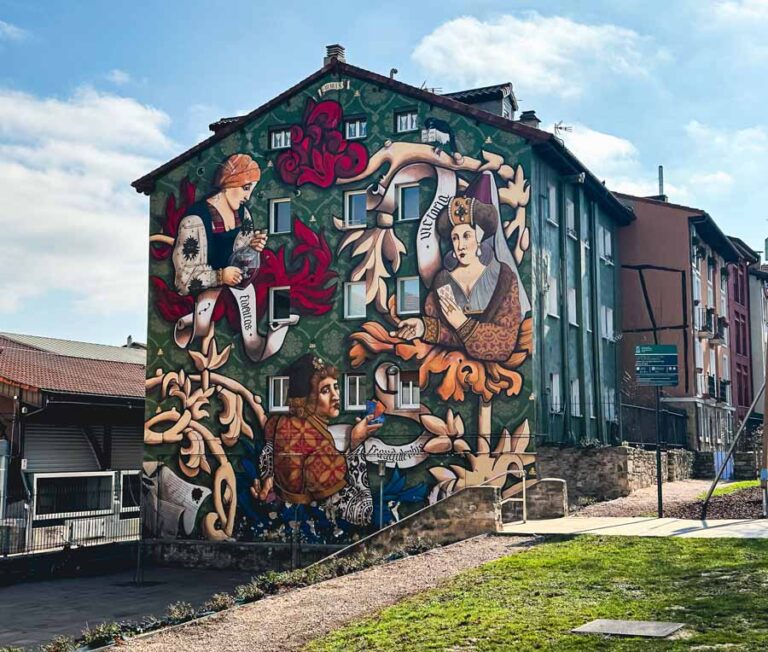
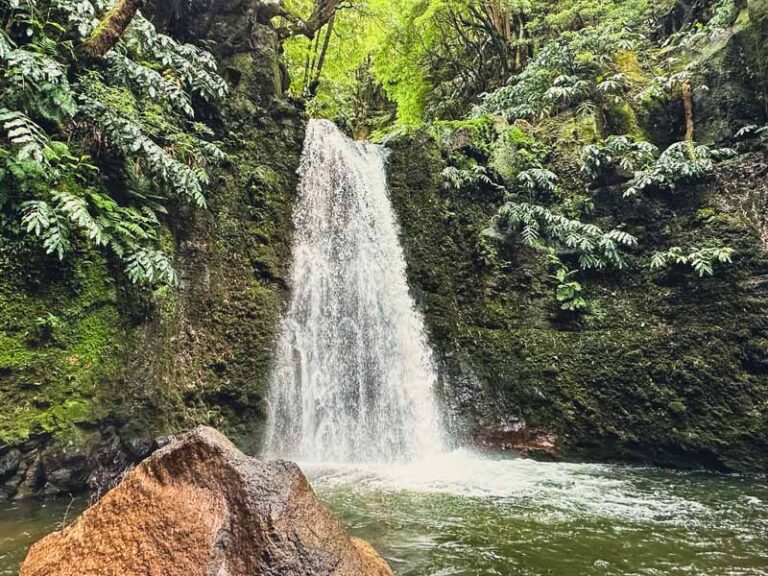

Wow, looks incredible! I have never heard of Picos de Europa, although I have been to Oviedo before. I will definitely explore more in the North of Spain in the future, thanks for this fantastic itinerary!
Thanks Toni!! Northern Spain is so incredible! I hope to get back and explore more of it in the near future, too! 🙃
Strange, but I have not heard of Picos de Europa National Park before. It looks like interesting place well worth traveling to. Thanks for bringing it to my attention and also a detailed itinerary with accomodation options!
It still is a little hidden gem tucked away in Spain! Thanks for reading!
I’ve been considering visiting this region for a while, thanks to a recommendation from a friend. It looks truly stunning, and perfect for a keen hiker like myself. I love the idea of exploring the mountains by day and tucking into a tapas and a few sidra by night.
Ahhh, yes! Miss those sidra bars. Happy hiking! 🥾
This area of Spain has been on my list for over a year – can’t wait to head up to the north!
Hi Megs, Love this article…sooo informative! I wish I had 4 days to experience it all, but sadly not. I wonder if you might be able to suggest a one day scenic driving itinerary through the Picos de Europa enroute from either Santander or Oviedo to Leon? I already have FOMO thinking about all the beautiful sights I won’t be able to see, but hoping you might be able to suggest a scenic route even if it’s a long day. Would appreciate your input. Thanks
Thanks Donna, I sent a reply via email! Thanks for reading and enjoy the Picos
Hi there, I note that you were there early November. Would you happen to know how the situation is like in early December? Will it be too cold/the weather conditions not ideal to visit the national park?
Hey Jules! I did go in early November and there was some snow in the mornings that did make certain roads in the higher mountains a little slick. Luckily, when the sun came up it all melted off the road. I am not honestly sure about December since the mountains always have a mind of their own. However, in most cases, the areas closer to the coast and not so inland like Cangis de Onís may be more temperate, but still pretty wet. If you decide to go I’d love to hear how December in the Picos was!
Your post is very informative. We’re planning a 4-5 day tour through the region and your writing really helped us in crafting our itinerary. Keep up the good work, Megs! And keep wandering.
Thank you so much Robert!🙏
I truly loved the Picos and know you will, too!! The area is so unlike any place else in Spain.
Enjoy 🏔
Hi Megs, Love this article…sooo informative! I wish I had 4 days to experience it all, but sadly not. I wonder if you might be able to suggest a one day scenic driving itinerary through the Picos de Europa enroute from Oviedo Would appreciate your input. Thanks
Hey Ashley-
So sorry for the late reply. I was just in Spain walking the Camino Frances and I did revisit the Picos on my way out, but didn’t take my laptop. From Oviedo, it’s very easy to reach Cangas de Onis, where it’s possible to visit the roman bridge, cider bars, Lagos de Covadonga, the popular viewpoint Mirador de La Reina, and the Basilica de Santa Maria la Real de Covadonga and the nearby Sanctuary of Covadonga. This is a great one day access from Oviedo and can be done with or without a car. 💙
I’m not sure if you would drive back to Oviedo, but you could also continue into Las Arenas de Cabrales, which is a small town that has access to smaller mountain villages like Ponceboes, Bulnes, Sotres, and even the Cares Gorge! I’m planning on writing a detailed guide for all my new info and hikes! 🏔
Happy Travels
Hello Megs
Massive thank you for your brilliant itinerary! We had a fantastic few days in the Pico’s, the highlight being the gorge walk!!! You helped us make the most of our few days in the mountains. Hope your travels are still going well! Keep blogging! BW Ruth
Thank you so much Ruth! The Picos de Europa National Park is one of my favorite places in Europe. So glad you got to enjoy it, too!
Hi just wanted to say a huge thanks for the Picos de Europas tour. We followed it recently and loved it so much we actually returned back to the Picos again having left! If you have the opportunity an extra day or so in Potes is good to allow more time on Fuente De walks. We stayed at the excellent Camping la Viorna. Also recommendation to start Ruta del Cares from Cain is perfect, Ruta Hostel is basic but great.
Thanks once again for a great itinerary in this lesser known area.
Thanks Paul! That’s so great and thanks for the feedback and suggestion!
I have also returned to the Picos twice now and may return again next month.
They really are a special place 🏔
Hi Megs, Thanks for this informative travel itinerary. We would like to follow your route and spend two days in Potes and are planning on going mid March. What are your thoughts on weather then? I saw that you went in Nov. so we where thinking March is also not a peak time and may be a good time to visit.
Hey Christie-
I think you will love two days in Potes!
I am here in Spain right now (January/Feb) and it has been unusually warm and dry. The weather will always be unpredictable.
Keep in mind that the buses will typically run in the Picos de Europa during Easter weekend which this year (2024) falls at the end of March. Enjoy the Picos de Europa, it is one of my favorite places in Spain. 🙂
Megs
Thank you so much for this post! I’m visiting Northern Spain for the first time but only had a few days and I am so happy that I stumbled on this blog post. It really is helping me make the most of my time there and I appreciate the many hiking suggestions!
You’re welcome! I love the Picos de Europa and the area seems to keep pulling me back each time I visit Spain. This itinerary follows my first trip which is a great taste of the Picos de Europa National Park and all three regions. Enjoy your time! 🥾